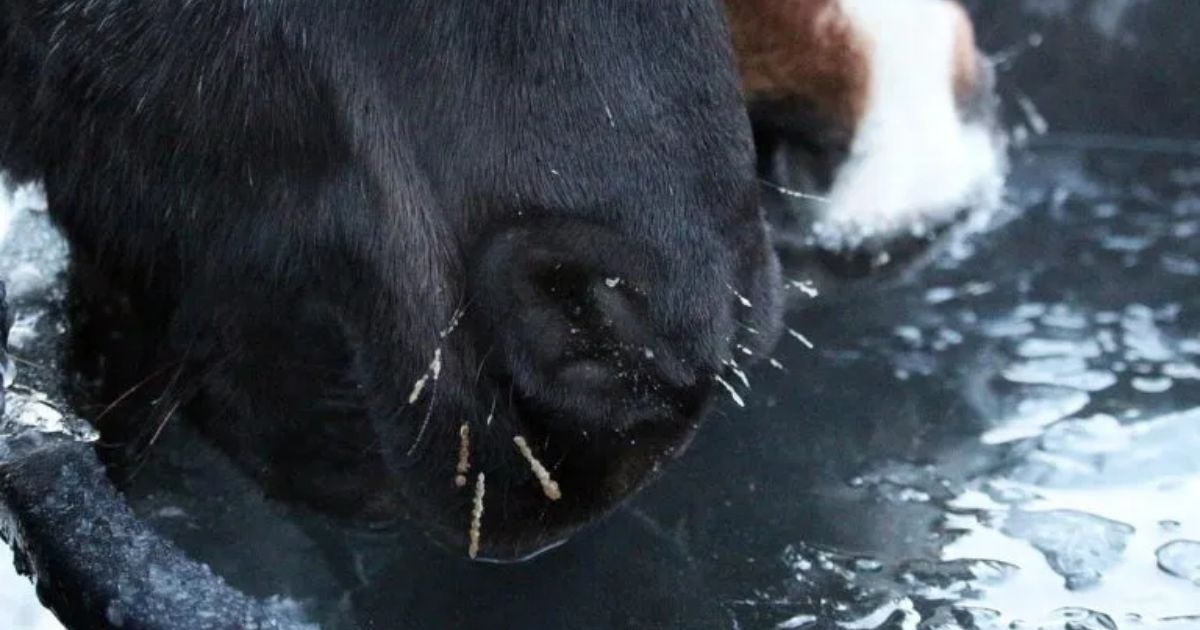Menu

Maintaining a frost-free water trough in the paddock during winter months can be a cumbersome affair, without having to spend a considerable amount of time breaking ice and pouring fresh water into the trough. Here, we provide some useful tips on how to reduce the workload associated with frozen water troughs. Remember, this article offers advice for milder frost conditions. In case of severe frost, more "drastic" measures may be necessary.
Although the sun is a rare sight these days, it occasionally peeks through the clouds. In those instances, you might as well take advantage of the situation and ensure that your water trough is positioned to catch the sun's rays. By doing so, you might not need to be ready with various tools to break the ice – the sun will do it for you. Of course, be aware of the thickness of the ice, and whether it is possible for the sun to melt it or, even better, keep the trough completely frost-free.
A lot of work can be alleviated by insulating your trough, tub, or whatever container you use for water in the paddock. Particularly effective are Styrofoam or some form of foil insulation, which, of course, should be placed so the horse cannot reach it. The ideal scenario is to wrap the insulation around the trough and then put an additional empty trough over it. Also, ensure insulation at the bottom to prevent frost from seeping up from the ground. If there are holes or openings in the insulation, they can be filled with some form of spray insulation that hardens – again to ensure that the horse cannot chew on it. Often, you can buy water troughs with a lid that has a hole so the horses can drink. A lid is a good idea because it helps keep the frost at bay, especially if insulation is applied to the inside of the lid.
Read also: Teach your horse to pee on command
Sometimes, it helps to prevent freezing by having a floating object in the water trough, which ensures movement in the water. The "waves" from the object make it difficult for the surface to freeze. At the same time, it reduces the work for you as a horse owner, especially if the horse learns to press the object down with its muzzle, ensuring there is always a hole in the ice and access to the liquid. For this purpose, a football can be used, but a bottle with salt water is also possible. Salt freezes at lower temperatures than ordinary water, and as long as there is still some air in the bottle so it can float, it is an excellent solution for movement in the water. The effectiveness of this method varies, but try it out and see if it helps in your water trough.
You might have seen this before, but a great trick is to put a football in the trough. The water does not freeze where the ball is, which allows horses the opportunity to push the ball away, thereby accessing a hole where they can reach the water.
If none of the above examples work, it may be necessary to heat the water. Several different options include electricity, batteries, heating elements, and more. But before investing in a lot of new equipment, a simple solution like horse manure can actually be an option. Place the manure under your trough, so dung and base meet. This is because horse droppings, when they begin to compost, generate heat and thereby help to keep the water frost-free.
If you opt for a more electrical solution, ensure that all cables are safely tucked away and do not get water on them. Again, it's a good idea to put a lid on the trough to retain the heat.
Read also: 7 Things every mare owner knows
Regardless of what you decide, you must, under all circumstances, prepare to check the water at least twice a day to ensure that the surface has not frozen over.
If you want to know more, you can read more about keeping water troughs frost-free in this article.